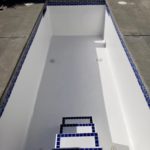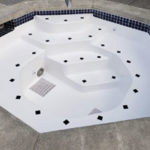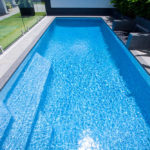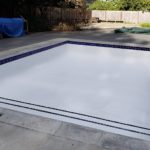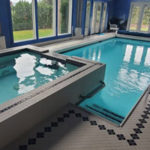Balancing on the swimming pools is sure not hard if you build its decks and pool, coping with the best slip resistance. Add to the picture an expert Las Vegas pool repair, and you are good to go! But aside from putting quality concrete and pool resurfacing Las Vegas material on the pool surfacings, you must also consider other factors and check if these are in good condition, and save yourself from untimely replastering.
- Pool water chemistry
- Sanitation and Cleaning
- Chlorine content
- Decking materials
- Maintenance practice
For today’s topic, you will get to focus on how to maintain the pool water’s chemical balance.
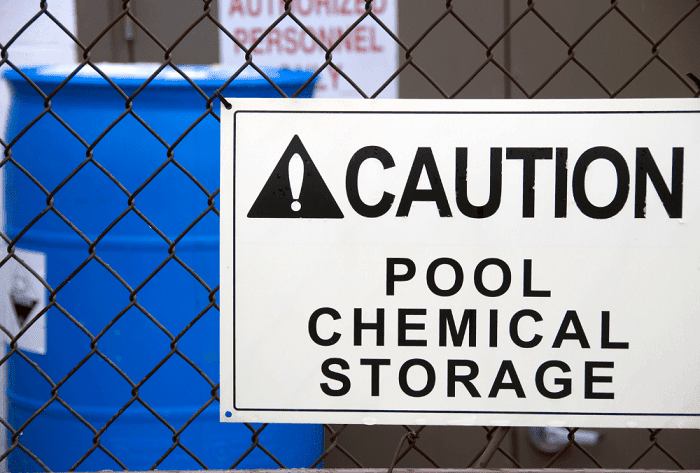
Las Vegas Pool Repair Recommends: Balancing Swimming Pool Water
First, take this quick chemistry class on pool waters.
Note these following pool water terms and understand how they affect the entire pool resurfacing and decks.
- Water Balance
- Alkalinity levels
- pH levels
- Calcium presence and deposits
Water Balance
Just like when you cook, creating a perfect taste should have a well-balanced sweet and spice. Although you will not drink and swallow the pool water, swimming should make you feel refreshed and relaxed. The water balance has something to do with it all.
The water balance refers to the correct proportions of chemicals used to sanitize and clean the water inside the swimming pool. Ever wonder what makes your pools a safe place to dive into? It is the water salinity aside from the decks and surfacings surrounding the pool shell.
Ergo, it is equally important that you keep the pool’s surroundings in perfect shape. Do this by maintaining the pool deck regularly. The main problem that often slips from your attention is that crumbs of porous materials mixed with outdoor soil and rotting leaves will destroy the water balance in the pool.
Next is a list of certain chemicals that you take a swim in.
Alkalinity
Let’s go back to cooking. You do not want your sauce to be too thick or too thin. Follow that same rule to water salinity. This component is the one responsible for keeping the pool water clean, delicate, and mud-free.
Keep the swimming pool’s salinity from 100ppm to 150ppm. Have too much of this, and the concrete surface on the pool will scale off quickly. Chlorine and salt deposits from the saline in the water will react to concrete. Making them crumbly or weak after some time.
Saline helps prevent dirt or mud from blending and dissolving in the pool. You do not want salinity to be too low, as it will cause the water to get cloudy quickly. That is why every time you splash, you submerge into the clean, clear blue water.
pH Water Level
Now the pH levels must be sustained from 7.4 to 7.6. What will happen if it goes beyond or below that?
Well, it pertains to acidity whenever pH levels are in the discussion. Yes, so that is why keeping a balanced pH level in the pool water is crucial.
Yup! Now you figure out why sometimes people do not enjoy swimming. It is not the coping and decks’ aesthetic that bothers them. It is the water that hurts their skin. Thus they avoid getting into the water. You do not want to swim into acid and burn your skin. Better check the pH level regularly, especially if you are maintaining a commercial pool.
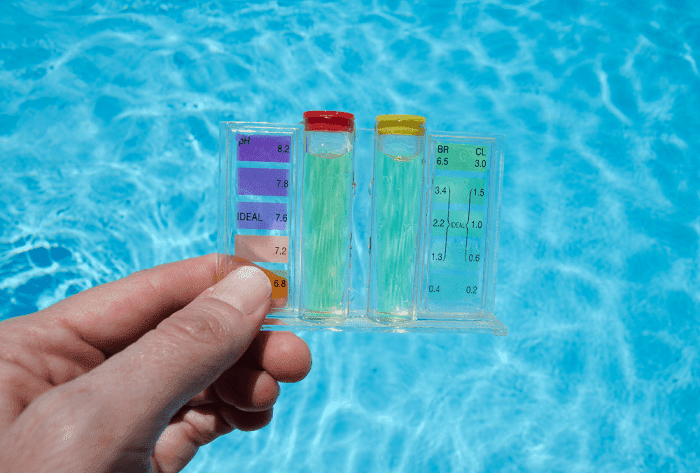
Calcium Contents
Protect the concrete plastering and concrete surfacings on the pool, and you will protect the water from going bad.
In alkaline and saline contents, the water becomes active eating solid materials like stone, tile, or concrete.
Without a balancing agent, the water destroys the exterior materials. That is why the pool shells become flaky. Cracking and chipping will soon become problems in the entire structure that will require heavy repairs.
By giving the right amount of calcium into a blend, you will keep the water from moving towards destroying the coping and pool plastering material. Provided that your pools got durable and solid plastering, then no crumbs of concrete will mix into the water.
Here are relevant blogs:
How Often Do You Need to Check & Clean your Las Vegas Pool?
How Often is Resurfacing Needed for Commercial Pools?
